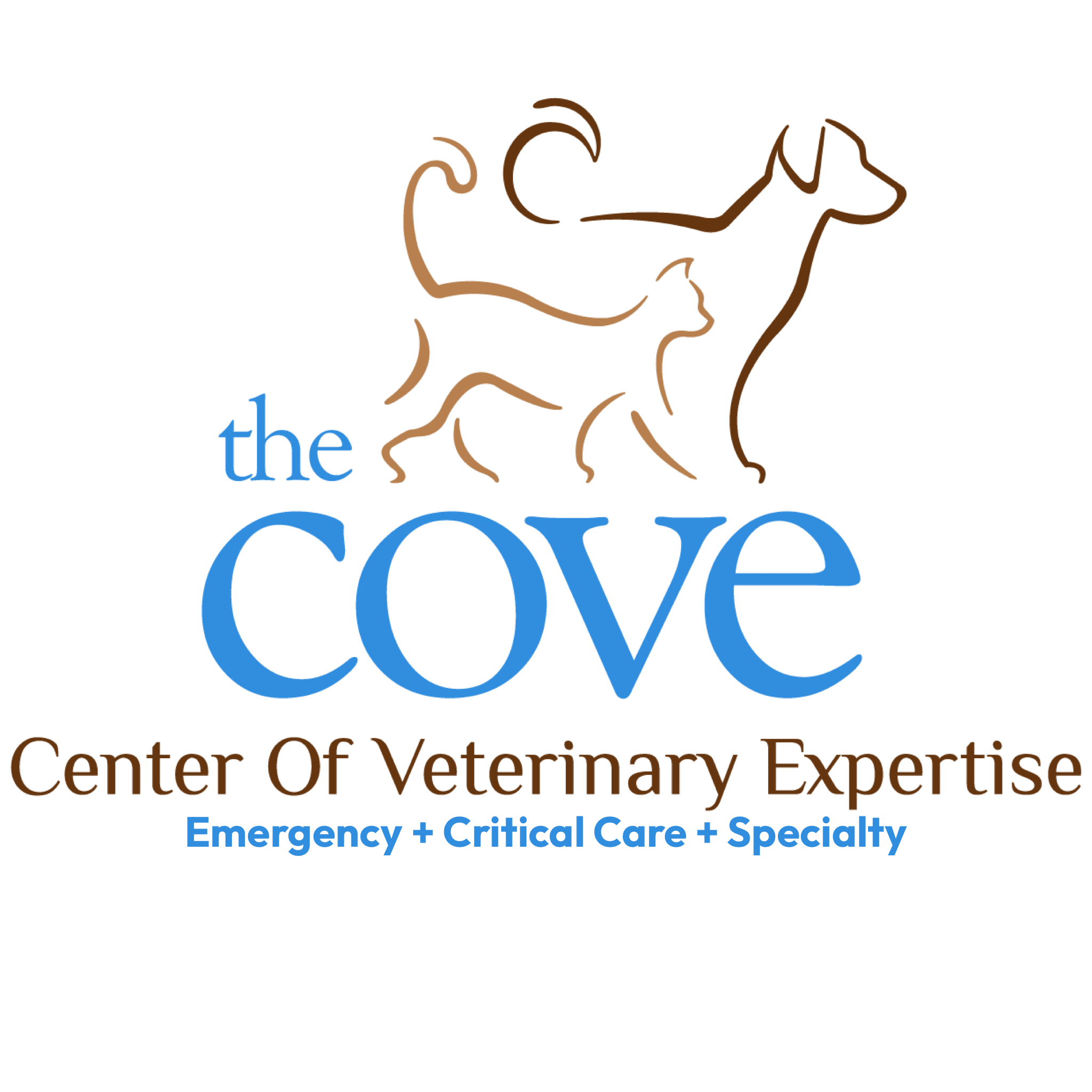Nobody likes bad dog breath. But keeping your pet’s teeth clean not only assures fresh breath but also a healthy pet.
Here at The COVE, we encourage all pet parents to brush their dog’s, and yes, cat’s, teeth regularly, give dental treats, and schedule routine dental exams with their primary care veterinarian.
However, there may come a time when your family veterinarian recommends more advanced dental care for your pet. Fortunately, The COVE’s Colleen Fox, DVM, has advanced expertise in veterinary dentistry, using state-of-the-art technology to diagnose and treat a wide range of dental issues.
In honor of February’s Pet Dental Health Month, here are 10 common dental procedures we perform at The COVE:
1. Periodontal Therapy

Periodontal therapy preserves teeth that have been affected by periodontal disease – infection and inflammation of the periodontium (the tissues that surround and support the teeth) due to plaque-forming bacteria.
While periodontal therapy can help treat periodontal disease, home aftercare is essential. In fact, our dentistry department only performs these procedures in cases where the pet parents are dedicated to a strict home care regimen and can brush their pet’s teeth regularly.
2. Root Canal Therapy
Root canal therapy is performed to preserve the function of a tooth. During this procedure, we remove the blood and nerve supply of the tooth and replace it with an inert material called gutta-percha. A sealant is placed over the access hole to prevent bacteria from entering the pulp chamber. At The COVE, we also recommend radiographs one year after the procedure to make sure the root canal was successful. Root canals have a 95 percent success rate, and most of the time, the pet does not have any more complications with that tooth.
3. Vital Pulp Therapy
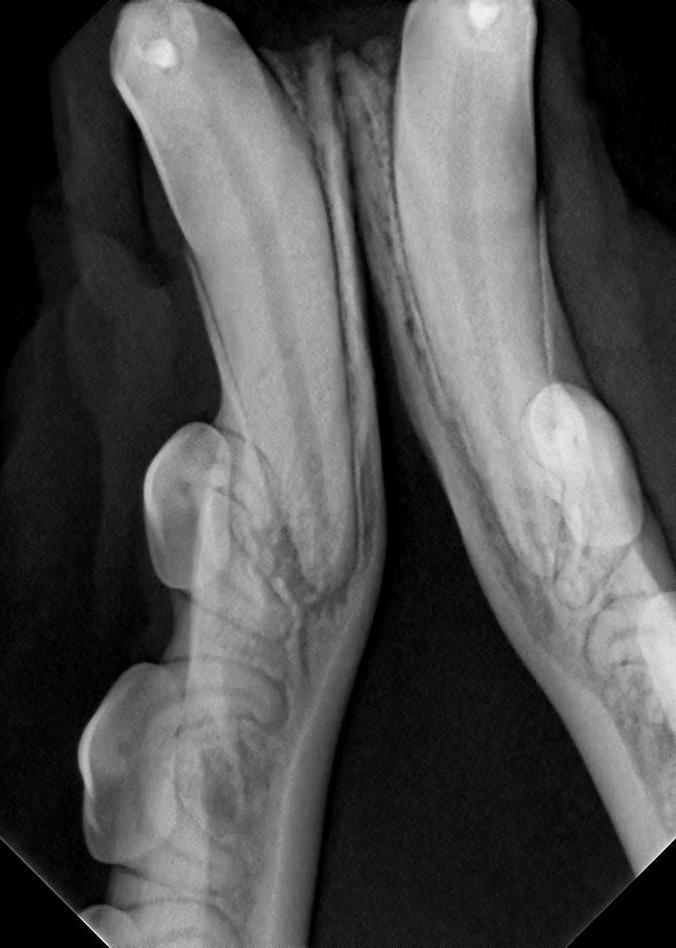
A vital pulp is a conditional alternative to a root canal for a broken tooth. This procedure is performed particularly in young animals (less than 18 months), as it preserves the function of the tooth while allowing it to fully mature.
4. Exodontics (Extractions)
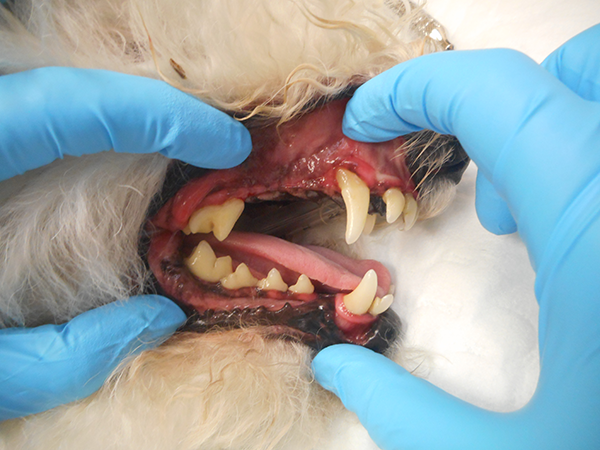
A tooth or teeth might be extracted because of severe periodontal disease, fractures, cats with chronic gingivo-stomatitis, and dogs with chronic ulcerative paradental stomatitis, among other reasons. During this procedure, pets undergo anesthesia to safely remove the teeth, and even with several extractions, they can continue to live happy and healthy lives.
5. Professional Dental Cleanings and Intraoral Radiographs

Professional dental cleanings keep your pet’s teeth and mouth clean and healthy. We also perform radiographs (x-rays) to help diagnose periodontal and endodontic disease, missing or extra teeth/roots, oral tumors, and fractures. All these efforts help to keep your pet healthy!
6. Oral Biopsies and Oral Mass Removals

Dogs and cats with an oral mass (abnormal growth in the mouth) are often referred to The COVE’s Dentistry department. Dr. Fox performs a biopsy of the mass, which is then examined by a board-certified veterinary pathologist. After we receive the results of the biopsy, Dr. Fox will evaluate how to proceed and whether surgical removal is required.
7. Crown Preparation and Cementation
Crown therapy is an option for dogs (and sometimes cats) to further protect teeth that are continually being worn down. Additionally, crown therapy may be viable for pets that have a broken tooth, are at an increased risk of breaking a tooth again, or require root canal therapy. Dr. Fox performs crown preparation with special burs (tools), then obtains detailed molds of the teeth and the entire mouth. The molds are sent to an outside laboratory where the customized crown is made from titanium. After the crown is shipped back to us, the pet is again placed under anesthesia, so the crown can be cemented onto the tooth.
8. Mandibular Fracture Repair
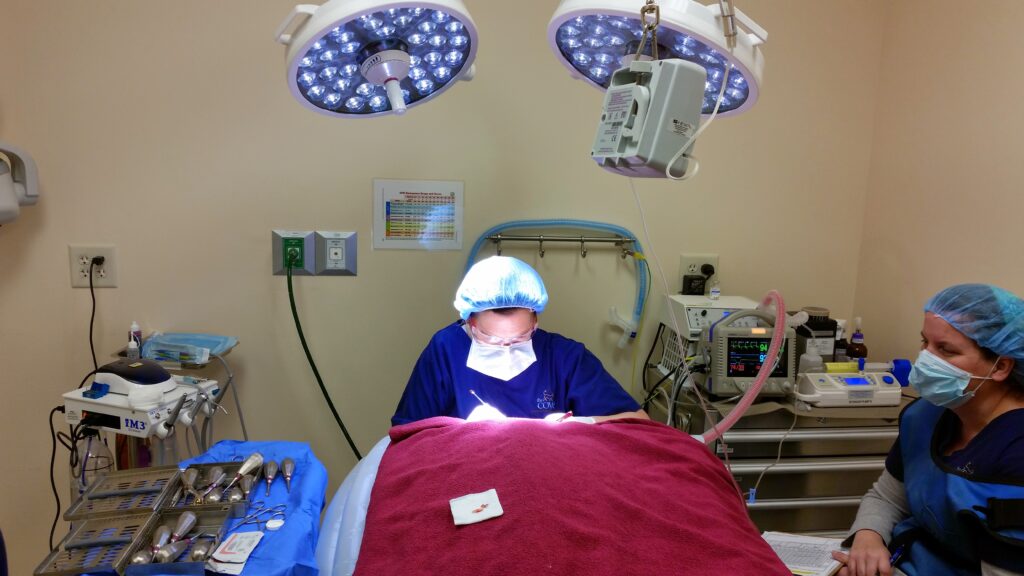
Unfortunately, dogs and cats can break their mandible (lower jaw) from trauma, such as being hit by a car, a dog fight, or struck by a falling object. Dr. Fox is trained in a variety of ways to repair oral fractures and will thoroughly explains the options to her clients so the best choice of treatment can be made.
9. Gingivectomies
Gingivectomy is the removal of excessive and/or abnormal gum tissue. Excessive tissue can occur when dogs and cats are on certain medications. However, most often, the underlying cause is periodontal disease. That is why annual dental visits and cleanings with your primary care veterinarian are essential.
10. Orthodontic Procedures
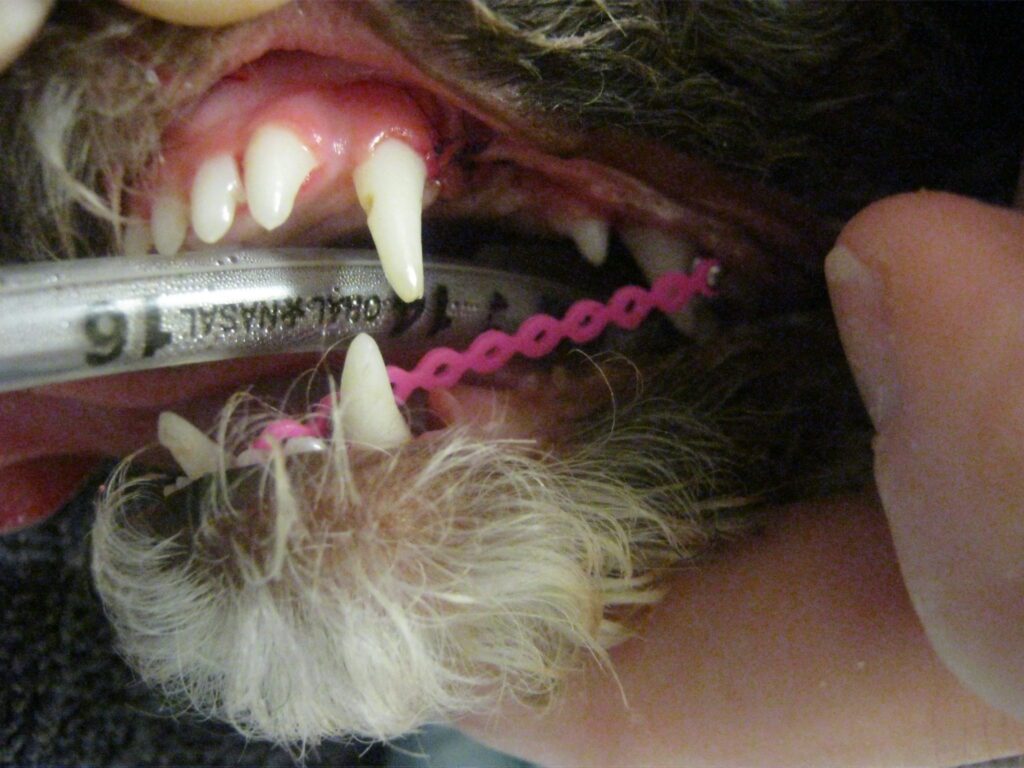
We perform orthodontic procedures to address painful and abnormal occlusions (malalignment of tooth, teeth or jaw). A variety of procedures can be performed, such as inclined planes, brackets, selective extractions, and crown shortening.
Anesthesia Is Used for Your Pet’s Safety
General anesthesia makes it possible to successfully perform dental procedures, but also allows us to complete exams and x-rays with less stress and discomfort for your pet. A patient under anesthesia is always closely monitored by one of our licensed veterinary technicians. Take comfort in knowing that throughout the procedure, we always keep a close eye on the patient’s heart rate, blood pressure, respiratory rate, temperature, end-tidal CO2, and oxygen saturation.
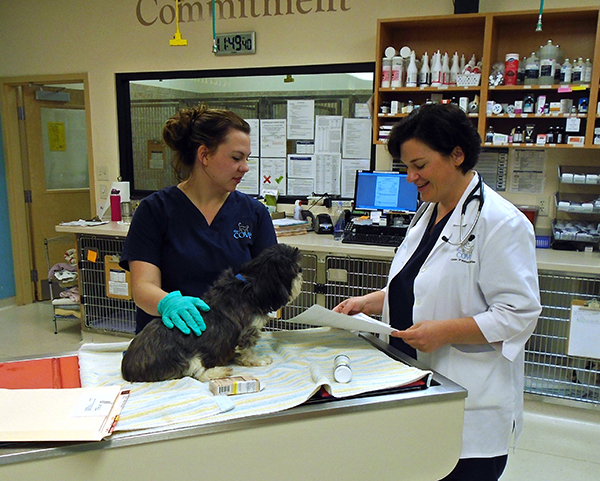
Is Your Pet in Need of Advanced Dental Care?
All of the above procedures are considered advanced dental and oral care. If your pet has been diagnosed with periodontal disease or has a broken tooth, ask your primary care veterinarian for a referral.
Dr. Fox is dedicated to educating pet owners about the importance of good oral health in a compassionate and calm manner. She accepts patients via referral from primary care veterinarians. Please call 757-935-9111 for more information or to schedule an appointment.
About Us
The COVE’s veterinarians and staff wholeheartedly embrace the core values of community, collaboration, commitment, compassion, and integrity. This focus ensures that pets, the people who love them, and their primary care veterinarians have as positive and affirming a healthcare experience as possible, regardless of the circumstances that bring us all together.
